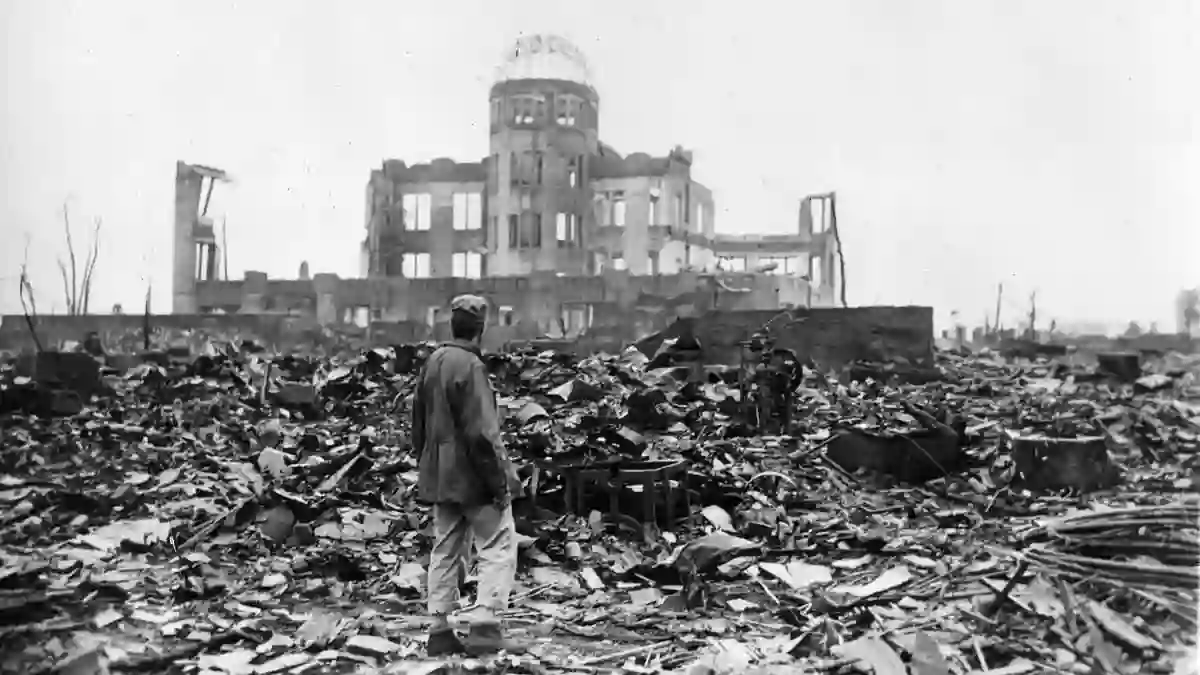On an otherwise ordinary morning in August 1945, a single event unfolded that would forever divide history into “before” and “after.”
At precisely 8:15 a.m. on August 6, the world witnessed something it had never seen—and would never be able to forget.
Over the Japanese city of Hiroshima, the first atomic bomb used in warfare was dropped from the skies, signaling a new and terrifying era for humanity.
The mission had begun hours earlier on the small Pacific island of Tinian.
What started as a secret military operation soon became one of the most infamous and consequential actions in the history of warfare.
The Drop From the Sky
Flying high above Japan in a B-29 Superfortress named Enola Gay, Colonel Paul Tibbets and his crew carried a 12-foot-long atomic device nicknamed Little Boy. The bomb, released silently, drifted downward for 43 seconds before detonating around 1,890 feet above Hiroshima.
It wasn’t the intended target—Little Boy missed by about 800 feet, exploding above the Shima Surgical Hospital rather than the Aioi Bridge.
But the impact was still catastrophic.
A blinding flash lit up the sky, followed by a thunderous blast wave that leveled everything for a square mile around the epicenter.
The Enola Gay, now six miles away, felt the shockwave hit.
Meanwhile, on a nearby plane named Necessary Evil, crew members watched in silence as a massive white mushroom cloud rose more than 45,000 feet into the air.
Destruction Unlike Anything Before
The devastation on the ground was beyond comprehension.
The temperature at the bomb’s core reached several thousand degrees—comparable to the surface of the sun.
Entire buildings were flattened, bodies were vaporized or burned beyond recognition, and the sky itself darkened under the force of firestorms that tore through five square miles of the city.
In an instant, 40,000 people were gone. Within the next 48 hours, that number would double.
The explosion didn’t just destroy Hiroshima’s city center—it annihilated its soul.
The Secret Mission Behind the Bomb
The mission had been months in the making.
From the early hours of August 6, Colonel Tibbets and his elite crew from the 509th Composite Group had been preparing.
The orders came directly from General Curtis LeMay under the top-secret code name Special Bombing Mission No. 13.
The targets were carefully selected: Hiroshima was first, followed by Kokura and Nagasaki as backup.
To maintain complete secrecy, no other aircraft were allowed within 50 miles of the bombing zone, and U.S. Navy ships were on standby in case the bombers needed rescue.
Security was so strict that even General LeMay was searched before being allowed to view the bomb.
The weapon’s components were kept disarmed until after takeoff—a safety measure insisted on by Captain William “Deak” Parsons, one of the key Manhattan Project scientists accompanying the flight.
Aboard the Enola Gay: Preparing for the Unthinkable
The mood among the crew was tense the night before.
Despite knowing what they were about to unleash, many couldn’t fully grasp the scale of destruction the bomb was capable of.
Tibbets passed time playing cards while others tried, and mostly failed, to sleep.
Before takeoff, changes were made to the aircraft’s radio call sign and altitude plan to help ensure a successful drop.
As the Enola Gay soared into the dark sky with its massive payload, it was joined by three other B-29s, including The Great Artiste and Big Stink, as well as weather reconnaissance planes that would determine which city would be targeted.
Over Iwo Jima, Parsons and his assistant crawled into the bomb bay to arm Little Boy.
Hiroshima, basking in clear blue skies, was chosen.
A Normal Morning Turned to Nightmare
As the crew approached Hiroshima, the city below was beginning its day.
People headed to work, schoolchildren walked to class, and families went about their routines—completely unaware of the destruction about to unfold above them.
Major Tom Ferebee, the bombardier, aimed for the Aioi Bridge and initiated the bomb run.
Down below, young Howard Kakita, visiting from America, was playing with his brother.
Just minutes later, their home was reduced to flames, and their grandmother, though injured, managed to escape.
For others, escape was impossible.
Surviving the Inferno
Thirteen-year-old Setsuko Thurlow was at a military office as part of Japan’s student work program.
After a blinding flash, she found herself buried in rubble.
A stranger pulled her free, but what she emerged into was nothing short of hell: bodies everywhere, fires raging, the cries of the dying echoing all around her.
Other survivors recalled similar horrors.
A child named Sumiko Ogata carried her brother through streets filled with flames and corpses.
Mitsuko Koshimizu, a schoolgirl, was forced to dig classmates from the wreckage.
People burned black. Skin hung from arms. Rivers filled with bodies.
And those who cried for water often died soon after drinking— their internal injuries too severe.
A City Left in Ruins
The destruction was almost total. Around 90 percent of Hiroshima’s buildings were either flattened or incinerated.
Of the city’s 16 hospitals, only two remained, both heavily damaged. Most medical personnel had been killed instantly, and communication systems were down.
With trains destroyed and bridges collapsed, escape and rescue were nearly impossible.
By the time Tokyo understood what had happened, the worst had already passed—but the real suffering had just begun.
With no infrastructure, survivors fled to the hills, hoping for help that rarely came.
Back at Base: A Haunting Victory
The Enola Gay landed back on Tinian just before 3 p.m. to applause and salutes.
General Carl Spaatz awarded Tibbets the Distinguished Service Cross. General LeMay asked if there were more bombs.
Tibbets confirmed—another one, Fat Man, was ready.
President Truman, receiving the news aboard the USS Augusta, declared it the “greatest event in history.”
The ship erupted in cheers. But for the crew who had dropped the bomb, the mood was somber.
Instead of celebration, there was a heavy silence.
Lieutenant Russell Gackenbach later described it best: what they had just witnessed wasn’t just a military success—it was a moment that shattered the boundaries of warfare and human conscience.
The City That Started a War, Silenced by One Bomb
Hiroshima had once been a thriving port city—home to the Imperial Navy that struck Pearl Harbor.
But in the wake of the bomb, it became a ghost town of ash, silence, and unimaginable loss.
The mushroom cloud rose like a living creature into the sky.
Below, the ruins of a city smoldered through the night.
Survivors described the nightmare in vivid, unrelenting detail—each story a reminder of the cost of a single bomb.
The Legacy That Still Lingers
This wasn’t just a military mission. It was a historical pivot.
One where human ingenuity crossed paths with unimaginable destruction.
The aftermath of Hiroshima still echoes today—in policy, in remembrance, and in the very way we understand the cost of war.
And for the men who dropped the bomb, victory was forever tangled with the knowledge that they had unleashed a force the world may never truly reconcile.

